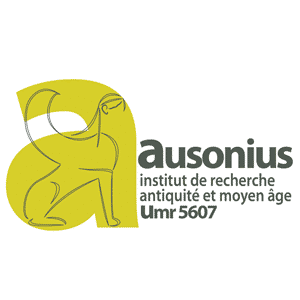Summary
1• Foreword,
Marcelo Cândido da Silva, Isabelle Cartron, Marcelo Rede
2• Introduction to the “material culture” (english)
Apresentação à “cultura material” (brasileiro)
Introduction à la « culture matérielle » (français)
Isabelle Cartron, Julie Renou
Chapter 1. To produce
3• Introduction,
Julie Renou
4• To produce in ancient societies,
Julie Renou
5• The “Chaîne opératoire” and the life of the objects,
Alexandre Bertaud
6• Transformation of the production system in the early Middle Ages,
Adrien Bayard
7• Insert 1 • How to read an artefact?
Julie Renou
Chapter 2. To feed
8• Introduction,
Marcelo Cândido da Silva
9• Feasting and fasting,
Alban Gautier
10• Insert 1 • Eating in a privileged site: the Frankish abbey of Hamage (7th-9th century),
José Fonseca
11• Famine and scarcity,
Marcelo Cândido da Silva
12• Insert 2 • Eating in a Frankish peasant settlement: the archaeological site of La Confiserie (9th-10th centuries),
Gabriel Cordeiro
Chapter 3. To trade
13• Introduction,
Adrien Bayard
14• Exchanges in ancient society,
Maria Beatriz Borba Florenzano
15• Insert 1 • To trade
Pierre Schneider
16• Non-market trade,
Adrien Bayard
17• Insert 2 • Coin hoards and hoarding in ancient and medieval societies,
Tom Balbin-Estanguet
Chapter 4. To write
18• Introduction,
Marcelo Rede
19• Manuscript writing,
Maria Cristina Correia Leandro Pereira
20• Inscriptions. Stories of matter,
Morgane Uberti
21• Insert 1 • What’s in a name?,
Coline Ruiz Darasse
Chapter 5. To live in
22• Introduction,
André Miatello
23• Living in the countryside in the southern roman Aquitaine,
Catherine Petit-Aupert
24• Habitation and inhabiting in the Middle Ages,
André Miatello
25• Insert 1 • Study of a structure from the Early Empire reused during Late Antiquity (Camp de César oppidum, Laudun-l’Ardoise, Gard, France). Technical drawing,
Thibaud Canillos
Chapter 6. To dress up
26• Introduction,
Wendy Bougraud
27• Archaeological Study of Funeral Clothing,
Wendy Bougraud
28• Clothing in the Ancient Near East,
Cécile Michel
29• Insert 1 • Restoring a hairdressing system: the case of a Mortagne-sur-Sèvres burial site,
Wendy Bougraud
Chapter 7. To fight
30• Introduction,
Alexandre Bertaud
31• Weaponry,
Alexandre Bertaud
32• Logistics,
Vinicius Marino Carvalho
33• The art of war, the war in the arts,
Leandro Ranieri
34• Insert 1 • Imaging war: for whom?,
Leandro Ranieri
Chapter 8. To pray
35• Introduction,
Isabelle Cartron
36• The first Christian churches in the countryside in the early Middle Ages: the case of the Bordeaux region,
Christelle Ehrhardt
37• Reading a palimpsest. The reuse in the ‘Duomo’ of Messina,
Léonardo Fuduli
38• Insert 1 • Objects as supports for individual prayer in late Middle Ages,
Haude Morvan
Chapter 9. To pass away
39• Introduction. A renewal of methods: archaeothenatology and the “archaeosciences”,
Isabelle Cartron
40• The demonstration of protohistoric funerary gestures, how and why?,
Stéphane Rottier
41• Funerary practices and associated remains in Early Middle Ages,
Marina Duarte Sanchez
42• The transformation of burial spaces in the Middle Ages,
Isabelle Cartron
43• Insert 1 • The material traces of penal death in medieval Europe,
Mathieu Vivas

Abstract
This book is the result of an Exchange program between the universities of Bordeaux Montaigne and Sao Paulo, which focuses on the western material culture of ancient and medieval societies. Each one of the nine chapters emphasizes the methodological and interdisciplinary aspects of the path of material cultures, also reflecting on the fundamental actions of societies: “To produce”, “To feed”, “To trade”, “To write”, “To live in”, “To dress up”, “To fight”, “To pray”, “To pass away”.
It’s not a question of presenting a chronological history, but of sampling a theme through its material heritage, also insisting on cross-referencing sources and methods. Immensely illustrated, this book is aimed at a university audience, but also at amateurs who are familiar with the subject.
Resumo
Este livro é o resultado de um programa de intercâmbio entre as universidades de Bordeaux Montaigne e São Paulo, que se concentra na cultura material ocidental das sociedades antigas e medievais. Cada um dos nove capítulos insiste sobre os aspectos metodológicos e interdisciplinares do caminho das culturas materiais, refletindo também sobre ações fundamentais das sociedades: “Produzir”, “Se alimentar”, “Comercializar”, “Escrever”, “Morar”, “Se vestir”, “Lutar”, “Orar” e “Morrer”. Não se trata de apresentar uma história cronológica, mas de fazer uma amostragem de um tema por meio de seu patrimônio material, insistindo também nos cruzamentos entre fontes e métodos. Imensamente ilustrado, este livro é destinado a um público universitário, mas também aos amadores que conhecem o assunto.
Résumé
Cet ouvrage est le résultat d’un programme d’échange entre les universités de Bordeaux-Montaigne et de São Paulo autour de la culture matérielle occidentale des sociétés antique et médiévale (programme COFECUB). Chacun des neuf chapitres insiste sur les aspects méthodologiques et interdisciplinaires de l’approche des cultures matérielles tout en renvoyant à des actions fondamentales de ces sociétés : “produire”, “alimenter”, “échanger”, “écrire”, “habiter”, “se vêtir”, “combattre”, “prier” et “mourir”. Il ne s’agit pas de présenter une histoire chronologique, mais thématique à travers un choix de thèmes permettant d’avoir une perception des sociétés à travers leur patrimoine matériel en insistant sur le croisement des sources et des méthodes. Abondamment illustré, il est destiné à un public universitaire comme aux amateurs éclairés.
Cette publication a été soutenue financièrement par l’Université Bordeaux Montaigne, l’Institut Ausonius, l’université de São Paolo, le LEME, la COFECUB, la FSAB et par le Grand Programme de Recherche Human Past et le Département Sciences Archéologiques de l’Université de Bordeaux.











